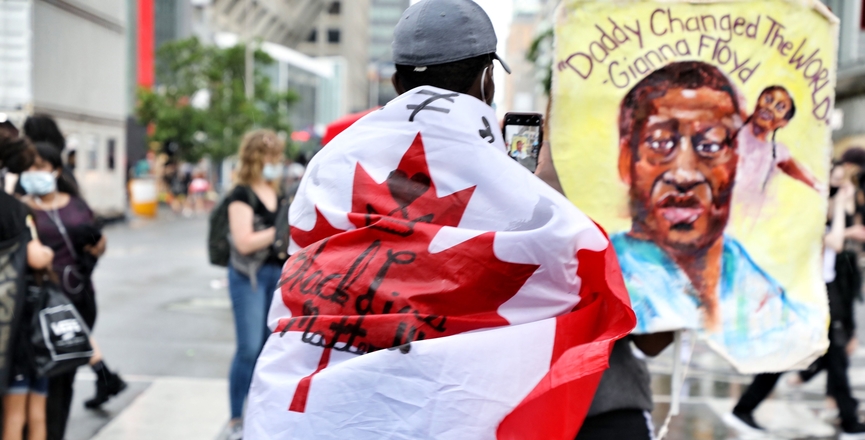The killing of George Floyd by Minneapolis police has set off anti-racism demonstrations in America and around the world. Marches and vigils have sprung up in Canada too, albeit with neither the fury nor aggression seen south of the border.
It is tempting to take the lack of unrest in our own country as evidence that Canada is not a racist or violent society. That Canadians have also not been inundated with videos of police brutality over the years is perhaps another indication of our inherently peaceful disposition. Whether or not you believe this might depend on how you define “violence.”
“Violence can never be understood solely in terms of its physicality — force, assault, or the infliction of pain — alone,” write Nancy Scheper-Hughes and Philippe Bourgois, two scholars of the subject. They argue that rebellious protest and police brutality are not discrete acts, but rather points along a continuum of violence “that also includes assaults on the personhood, dignity, sense of worth or value of the victim.”
All racially motivated aggressions and micro-aggressions are linked along this continuum. It ranges from rights violations and physical attacks against racialized peoples, to more subtle and diffuse forms of systemic bias that deny them the same opportunities at life and livelihood other citizens enjoy.
Canadian activists have already illustrated the utility a continuum of violence approach has for understanding and exposing gender as a common determinant of violence against women and girls here. Doing the same in the context of racial injustice can be a further step towards preventing violence in Canada.
Not violent rebellions, perhaps. But rather the violence that makes Black Canadians more likely than any other racial group to be the victims of a hate crime; the violence that makes Black people here more likely to be injured or killed by police in our biggest city and overrepresented in our jails overall; and the violence that doubles their likelihood of being low-income (compared with those not belonging to a visible minority group), and lowers their likelihood of employment and their expectations of obtaining higher education qualifications when compared to other groups.
Then there are of course the egregious circumstances in which many of Canada’s Indigenous populations reside. There is violence there too — in epidemic-level suicide rates, high poverty, lack of clean drinking water and the like.
Let Canadians not forget these facts. In the coming days and weeks, we will have the urge to look at the broken windows, blazing cars and police lines in the United States, and turn away saying: “that is not us, we are better than that.” The extent to which that is true will largely be determined by whether we are able to then look back at ourselves and face the hostilities fraying our own social fabric.
The call to see violence along a continuum also has important implications for public safety and policing in this country. Locating violence solely in an act of physical aggression makes it more likely that public safety strategies will focus on aggressive policing of the kind seen in lead up to, and in the aftermath of, George Floyd’s death.
Expanding how violence is defined, however, also expands possibilities for how public safety can be perceived, as well as how it can be done and whom it might serve. In line with the policing reforms being demanded by anti-racism protesters, there is an opportunity to reorient public safety away from the application of force, towards comprehensive community-oriented models based on greater trust-building, social engagement and broad-based service provision.
Canadian cities can then begin to better consider — and fund — social services, mental health, education, community services and justice initiatives, instead trying to arrest and incarcerate their way to a more secure society.
These are the types of reforms needed to actually address the many underlying causes of violence. Changing our idea of what constitutes violence is a step in that direction. Violence is not limited to the smashing and looting stores; nor can it simply be seen as a knee on the neck of another human being.
Addressing protests and policing in United States means also addressing the continuum of suicide, racism, incarceration, poverty and alienation that slowly suffocates racialized peoples every day within our own borders. Failure to do so itself constitutes a crime of omission, for which there is plenty of blame to go around.
Dariusz Dziewanski is a Canadian freelance researcher whose work focuses on street culture, gangs, and violence. He obtained his PhD in development studies from SOAS University of London, and is currently a visiting lecturer at the Centre of Criminology, at the University of Cape Town’s faculty of law. Follow him on Twitter: @ddziewan.
Image: Mitchel Raphael



